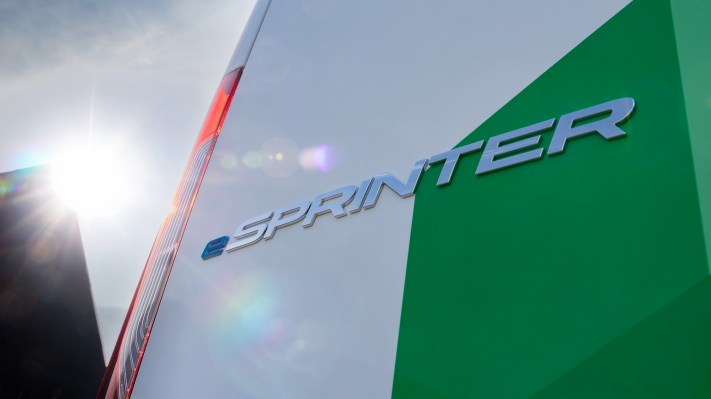Mercedes-Benz said Tuesday that its long-anticipated and updated battery-electric eSprinter is finally coming to North America, with production set to begin in the second half of 2023 at its factory in Charleston, South Carolina.
The Mercedes-Benz eSprinter — and its arrival to the United States and Canada — has been teased for months now. And sure, this is really meant to be a cargo van for commercial customers, but in the land where old ambulances are converted to a home on wheels, who’s to say the next generation of boondockers won’t all have the eSprinter?
Mercedes provided Tuesday a fuller picture of the battery-electric van, with the exception of what the sticker price will be. The German automaker said it invested around €350 million and took a module approach when it set out to produce the new eSprinter, a strategy that gave it the greatest possible freedom in the development and design of the van.
In other words, Mercedes aims to appeal to — and sell to — a variety of customers and in different regions.
However, customers in U.S. and Canada will have a limited choice, at least initially. The company said the new Mercedes-Benz eSprinter will come to market in those countries as a long cargo van with a high roof and packed with a 113 kilowatt-hour battery, the largest it offers. Production in Europe, which will be at the company’s German factories in Düsseldorf and Ludwigsfelde, will also begin later this year and offer different variants.
Every variant of the electric van is comprised of three “modules” that includes the battery and an electric powertrain with a new, more efficient permanent magnet synchronous motor and electric rear axle — both of which are being used for the first time in its van, according to the company. The motor is available in two power levels, with 100 or 150 kilowatts of peak output, and delivers a torque of up to 400 newton meters (or about 295 pound-feet).
The front section is where Mercedes has tucked all of the all high-voltage components, which can be combined unchanged with all vehicle variants, regardless of wheelbase and battery size, the company said. The battery, or second module, is located under the floor between the axles to provide a low center of gravity. Finally, the third module is in the rear, where the electrically driven rear axle is located and will be used in all variants of the new eSprinter, according to the company.
The end result is a cargo van that has load capacity of 488 cubic feet, a gross vehicle weight of 4.25 tons and an estimated range (under Europe’s WLTP standard) of 500 kilometers (248.5 miles) on highways and 500 km (311 miles) in the city. WLTP is considered a bit more generous than the U.S. EPA’s standard.
Importantly, the eSprinter can charge with both alternating current (AC) and direct current (DC). There’s an on-board charger that converts the current in the vehicle when charging with alternating current and has a maximum output of 9.6 kilowatts.
Mercedes said the new eSprinter can be charged with up to 1,155 kilowatts at fast-charging stations. At a fast-charging station that means a van equipped with the 113-kWh battery can charge from 10% to 80% in about 42 minutes.
One final item may be of particular interest to the commercial customers who buy the eSprinter. Just like Mercedes’ passenger vehicles, the new eSprinter will be equipped with its MBUX infotainment system.
[gallery ids="2481402,2481403,2481404,2481405,2481406,2481407,2481408,2481410,2481411,2481412"]
